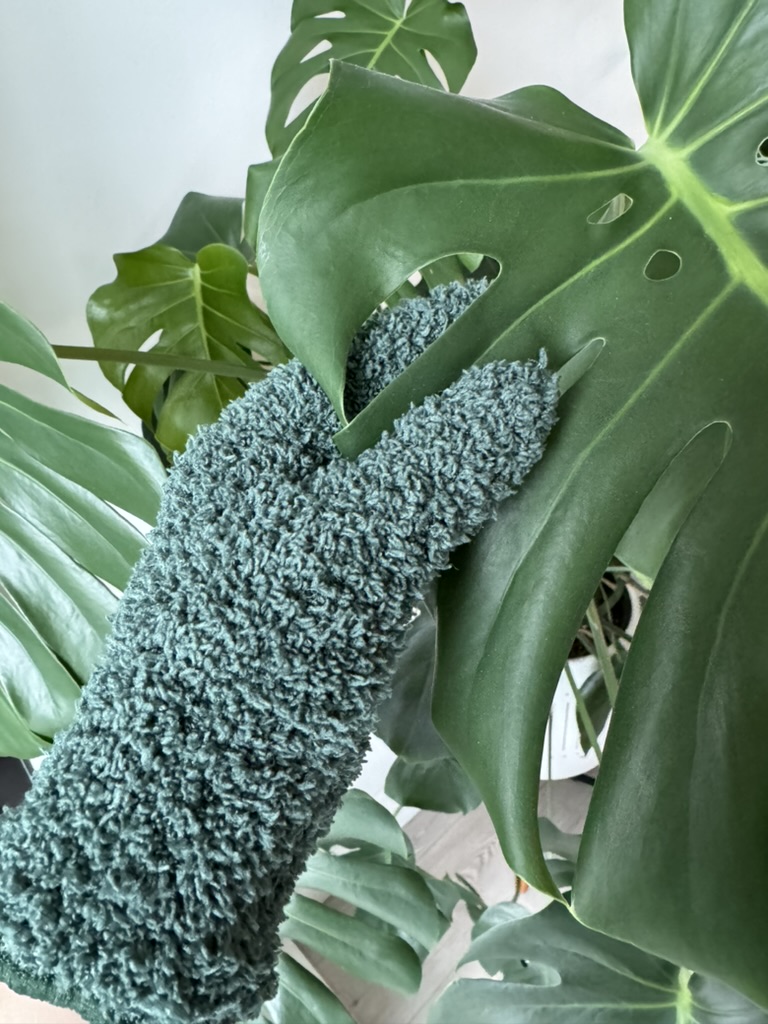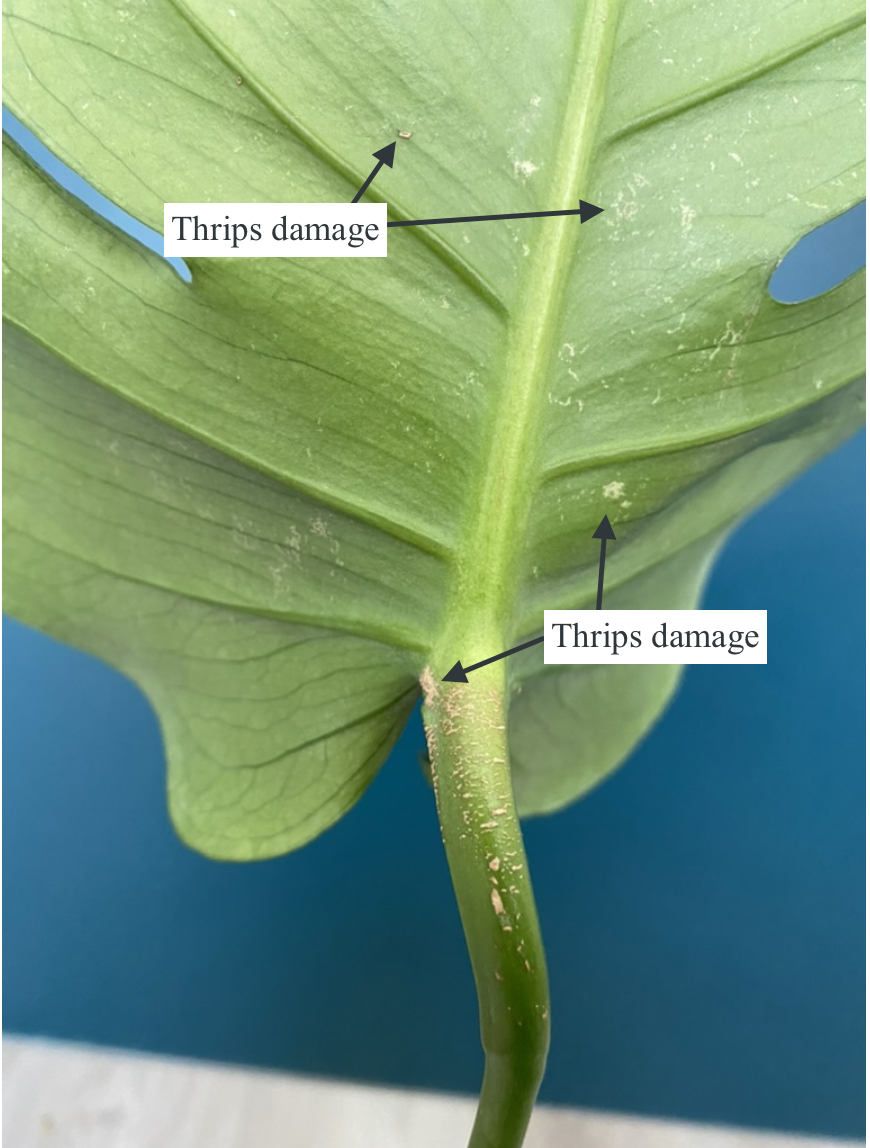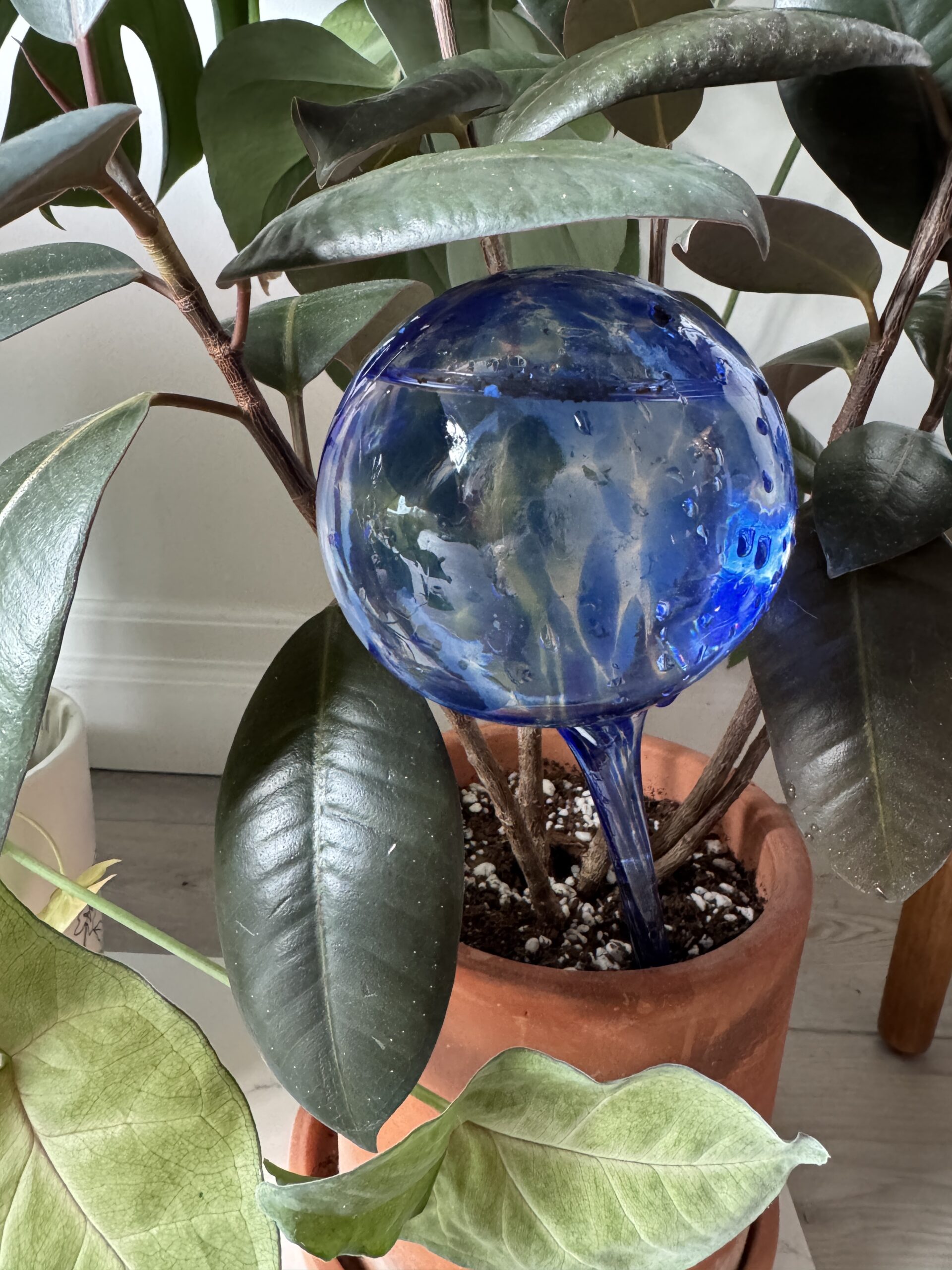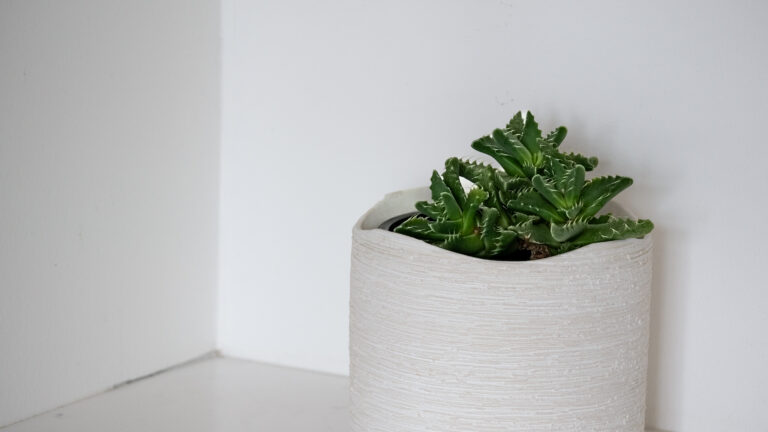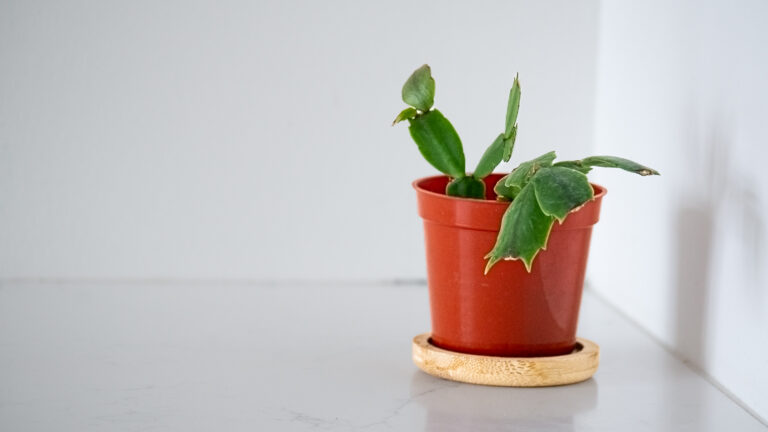Haworthia Zebra or Haworthiopsis attenuata is a member of the Asphodelaceae family. It is native to South Africa, but has been introduced to central and southwest Mexico.
Haworthiopsis attenuata is referred to as the Haworthia Zebra (and many other nicknames) because of the white stripes on the plant that resemble zebra stripes.
There are around 900 known species of the Asphodelaceae family.
Haworthia Zebra Appearance & Growth Habit
Haworthia Zebra grows in a rosette form, with green, thick, triangular leaves with white horizontal stripes.
Light Requirements for Haworthia Zebra
Haworthia Zebra thrives in bright, indirect light. They prefer 4-6 hours of sun (preferably in the morning). Ideally in an east facing window.
Ideal Temperature & Humidity for Haworthia Zebra
Haworthia Zebra prefers a temperature between 18-26 degrees celsius (64.4-78.8 degrees farenheit), but can tolerate 10 degrees celsius during the winter. Since they come from arid regions, they prefer lower humidity air, but do well in average household humidity levels of around 40-60%.
I keep my succulent closer to the window and further from the humidifier. I use my humidifier to ensure the humidity levels in my apartment stays between 40% and 60%. Since I live in Canada and the winters can be very dry, and the humidity can drop below 30% humidity, so its helpful to set the humidity at about 45% or 50% in this season to keep all of my plants alive.
Growth Rate & Fertilizer Needs for Haworthia Zebra
On average, Haworthia Zebra can grow up to 8 inches tall. New foliage grows in rosette form from the center of the Haworthia Zebra.
To support healthy growth, fertilize your Haworthia Zebra with a succulent fertilizer once in spring and once in summer. Avoid fertilizing in its slow growth/dormancy seasons of fall and winter.
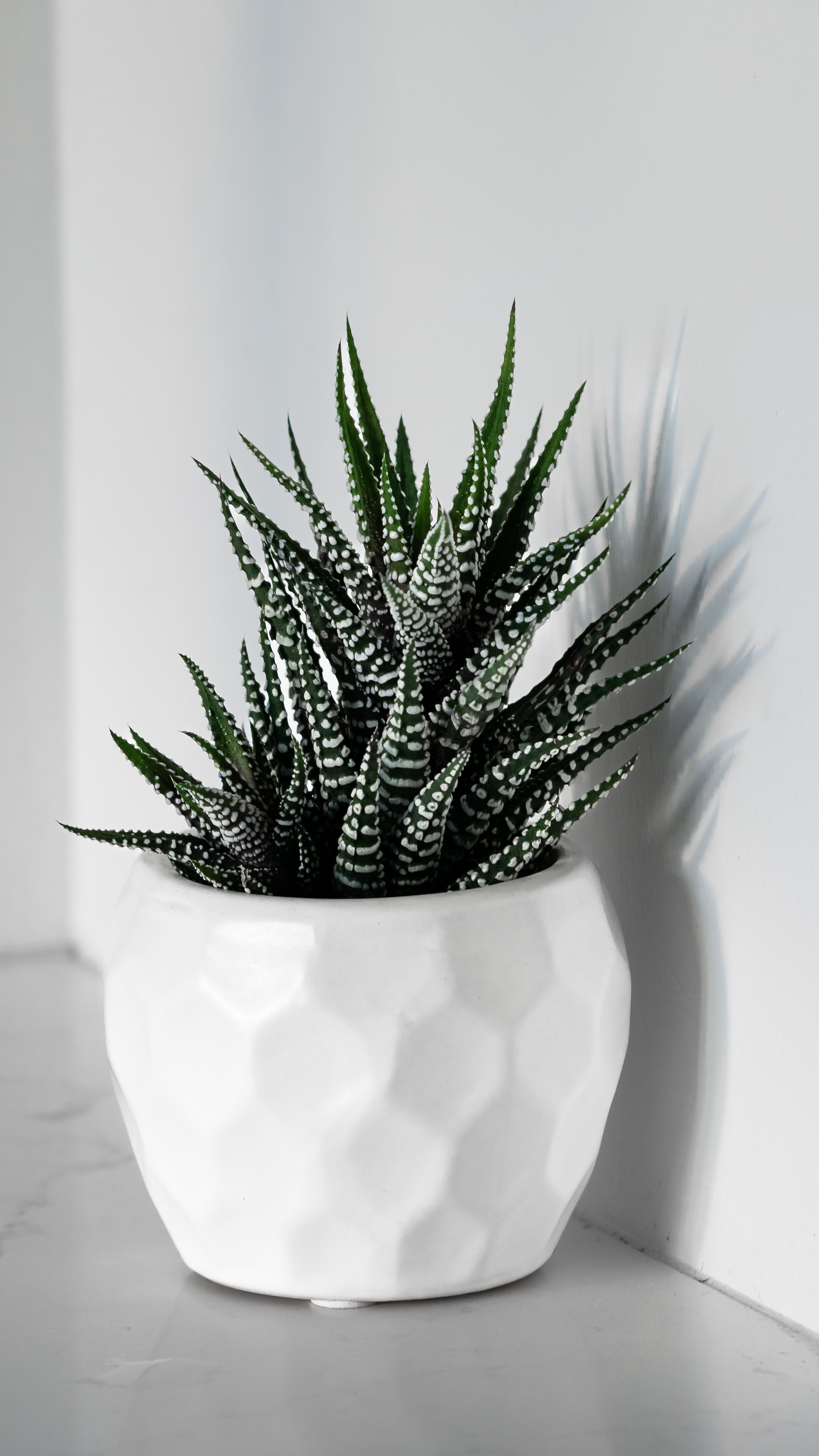
When & How to Repot Haworthia Zebra
You will know its time to report your Haworthia Zebra if it has been 2 years since your last repot, you notice roots growing out of the drainage holes, the pot is becoming too crowded with offsets, or soil is drying out too quickly.
The best time to repot is in spring or early summer (just before its active growing period). Choose a pot 2″ larger than its current pot with a drainage hole. Use a gritty, well-draining succulent mix.
Haworthia Zebra Repot Step-By-Step
Watch the video below to learn how to repot the Haworthia Zebra.
- Remove Haworthia from pot
- Detangle Roots
- Add new, well draining soil (lots of perlite) into a pot with drainage
- Place Haworthia into the pot, add more soil, until roots are covered
- Water Haworthia
For everything you will need during your repot, check-out my repotting essentials guide.
How to Propagate Haworthia Zebra (Offsets & Cuttings)
The easiest way to start a new Haworthia Zebra is by offsets and cuttings.
Offsets/Cutting
Look around the base of the Haworthia for offshoots. Make sure the offshoots are at least 2 to 3 inches tall before separating them from the mother plant. Gently remove them from the parent plant by separating them at the base. With Haworthia they look kind of like the baby plant is attached to the mother plant from the side, but the leaves are smaller. Once separated, set the offshoots aside for a couple of days until a callus forms. Once calloused, pot the offshoots into well-draining soil. Bury the cut end slightly. Water the soil lightly and place in a bright location with indirect light. Eventually, roots will form and you will have a stable plant!
Division
Sometimes multiple plants will be potted together. In this situations, you can remove the entire plant from the pot, gently separate the plants, and plant the individual Haworthia into new pots. Make sure you water the newly divided plants and place them in a bright location with indirect light.
Soil Propagation
With soil propagation, you can take a cutting and put it directly in soil. You can also use rooting hormone on the cutting before putting it in the soil if you prefer. I don’t do currently do this, but some people find this more effective. Eventually the plant should grow roots in the soil, but if it dies, you know the propagation wasn’t successful.
Patience is key with propagation. Give your new plant time to settle into its environment. Once you see new growth, you know your plant is well established.
Watering Haworthia Zebra: How & When
The Haworthia Zebra likes to dry out between waterings. To determine if your plant needs water, you can stick your finger in the soil (1 to 2 inches) and if it is dry, its ready for water! If you don’t want to get your hands dirty, you can use a moisture meter.
Haworthia typically need to be watered every 2-4 weeks (depending on your environment).
I typically bottom water this plant through the drainage hole of the pot on a tray. It’s the easiest way to know if your plant is thirsty or not. Overwatering can lead to fungus gnats, root rot, or the death of your plant.
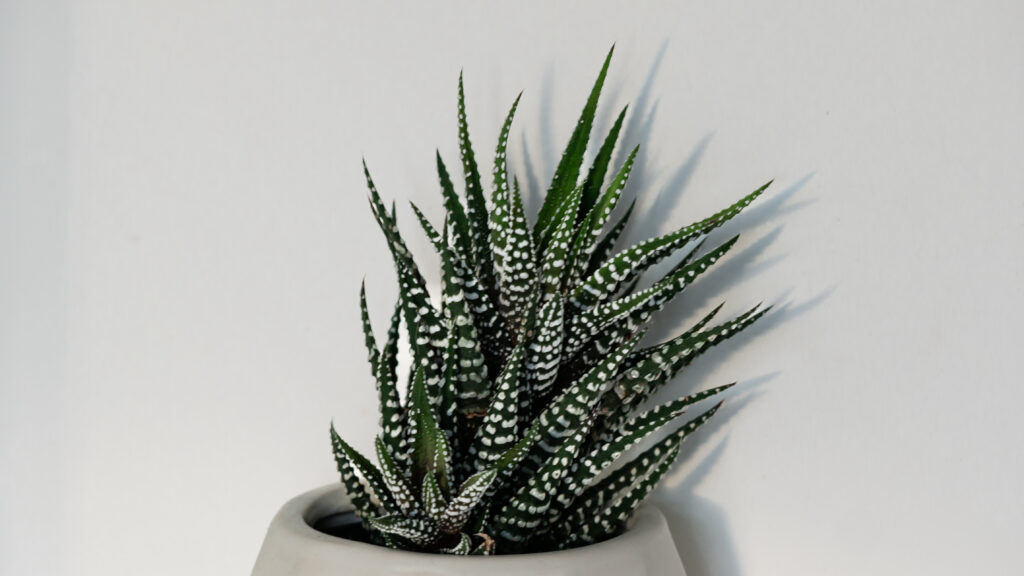
You can top water, but it’s best to do so in a pot with drainage, until water is flowing out of the drainage hole. If your pot doesn’t have drainage, you might accidentally drown your plant or make some fungus gnats very happy.
You should top water from time to time to make sure any build up of minerals can wash through the soil. The water should drip out of the bottom of your drainage hole.
If you are going away, and worried about watering your Haworthia, check-out my guide on 3 ways to keep your plants alive while on vacation.
Common Pests & Problems in Haworthia Zebra
Haworthia Zebra can face the following pests and problems.
Pests of Haworthia Zebra
- Mealy Bugs: these look like little white cotton balls on the Haworthia. You can remove these with your fingers if you catch them early enough, but I would use a cotton swab with a drop of Isopropyl alcohol and try to scrape them off the stem.
- Fungus gnats: Spray the Haworthia with a mixture of neem oil, dish soap and water. I also let the soil dry out and add dryer sheets on top of the soil so the gnats can’t sense the moisture on the soil, and add yellow sticky traps so the gnats get stuck and don’t continue breeding.
Other Common Problems of Haworthia Zebra
- Drooping: Your Haworthia is likely thirsty. Just give it a little water and it should be as good as new.
- Overwatering: Root rot happens from overwatering your Haworthia with insufficient drainage. You can improve the drainage of your plant by ensuring your Haworthia is potted in a planter with a drainage hole and using a well draining soil (something with a decent amount of perlite). You can also end up with fungus gnats or fungal disease from overwatering.
- Underwatering: Even though plants prefer to be underwatered over overwatered, you still have to remember to water your Haworthia on a consistent schedule. Signs of underwatering can include leaves becoming shrivelled, discoloured or dry.
- Yellowing or Red Leaves: Discoloured leaves can be a sign of too much sun. This is like a sunburn on the Haworthia. Try moving your plant to a slightly shadier spot (east-facing window if possible) and see if this solves your problem.
- Cold Temperatures or Temperature Fluctuations: Damage from cold temperatures can lead to vulnerability to disease, visible discolouration, growth stagnation or death of your Haworthia. You can prevent this by making sure your Haworthia is not exposed to environments below the recommended temperatures.
Haworthia Zebra Blooming: What to Expect
Yes, this plant can flower, however this is rare indoors, and will only happen if the plant receives enough bright, indirect light after a long period of rest in the winter. Typically, its flowering period is the spring/summer.
When Haworthia Zebra blooms, its flowers are small, tubular white, pale pink, or orange. They grow off of wiry flower stalks.
Most plant enthusiasts grow Haworthia Zebra for its striking, striped foliage as opposed to its blooms.
Haworthia Zebra Toxicity
Haworthia Zebra are typically not toxic to touch or consume, however some people may experience allergic reactions if they ingest or touch the plant.
There are no harmful compounds in Haworthia Zebra, so this makes it a safe choice for households with curious pets or children. Even though it is non-toxic to humans and pets, its still best to discourage chewing on leaves as this can still cause an upset stomach.
Haworthia Zebra Quick Care Guide
| Scientific Name | Haworthiopsis attenuata (formerly Haworthia attenuata) |
| Nicknames | Haworthia Zebra, Zebra Haworthia, Zebra Cactus |
| Light | Bright, indirect light |
| Temperature | 18-26 degrees celsius (preferred), 10 degrees celsius can be tolerate during the winter |
| Humidity | Average humidity (40-60%) |
| Height | Up to 8 inches tall indoors |
| Blooms | Yes |
| Propagate | Offshoots, cuttings |
| Water Frequency | When dry (every 2-4 weeks depending on your environment) |
| Pests | Mealy Bugs, Fungus Gnats |
| Common Problems | Sunburn, Drooping Leaves, Overwatering, Underwatering |
| Toxicity | Non-toxic |
References
Below is a list of external sources I consulted while writing this post. This post is a mixture of my own experiences, and the external sources listed below:
The Spruce – Haworthia Succulents
Kew – Haworthiopsis attenuata
Planet Desert – Zebra Haworthia

